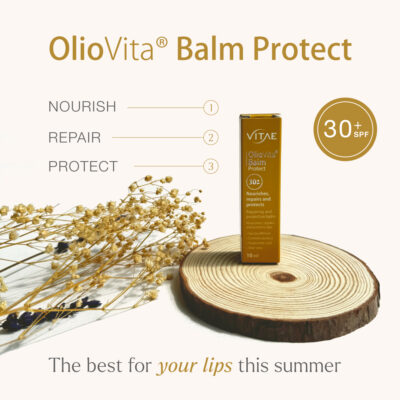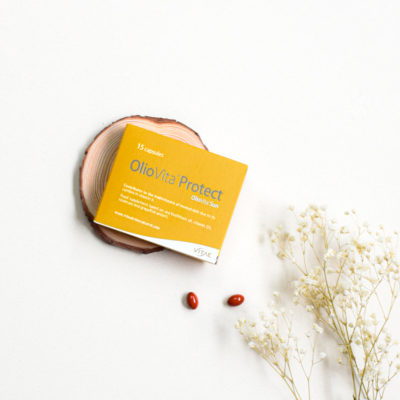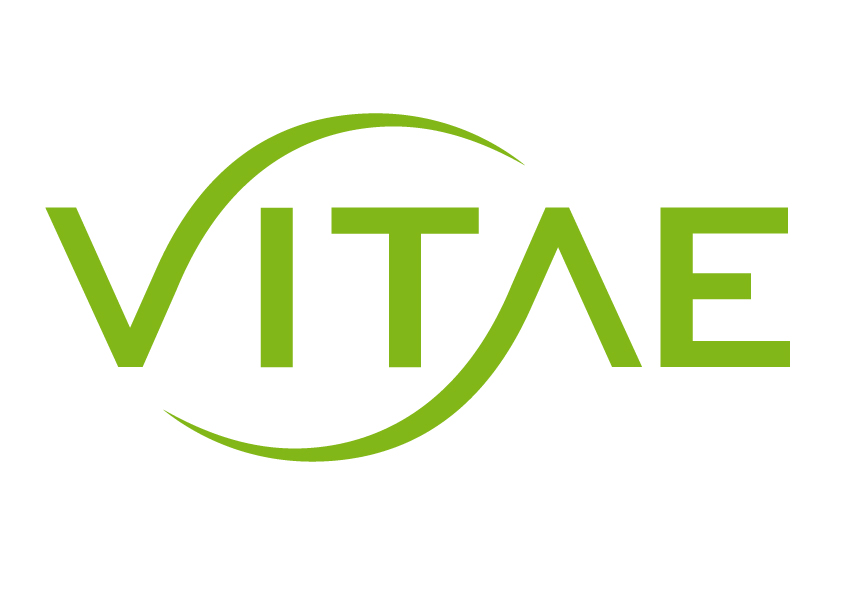What is an oral photoprotector?
When we talk about sun protection, we usually think of creams, sprays or lotions we apply to our skin to protect it from the sun. But there’s another way to protect ourselves from within: oral photoprotectors.
An oral photoprotector is a dietary supplement formulated with active ingredients that help strengthen the skin’s natural defenses against solar radiation. These compounds work by neutralizing free radicals generated by sun exposure and help reduce oxidative damage, inflammation, and skin sensitivity to the sun.
They do not replace topical sunscreen, but they enhance overall skin protection, especially in people with photosensitive skin, sunspots, sun allergies or skin conditions that require reinforced photoprotection.
How is it different from a topical sunscreen?
Although both types of sun protection share the same goal—protecting the skin from harmful sun effects—they work in different ways:
-
Topical sunscreen acts as a physical or chemical barrier applied directly to the skin to block or absorb UV rays before they penetrate.
-
Oral photoprotection, on the other hand, works from the inside out, strengthening the skin’s resistance to sun damage, reducing inflammation, oxidative stress and premature aging caused by the sun.
Both are complementary, not interchangeable. In other words, oral photoprotectors do not replace sunscreen. Ideally, they should be used together—especially during periods of high sun exposure, for sensitive skin, after dermatological treatments or in people prone to hyperpigmentation, melasma, or sun reactions.
Is it the same as an oral sunscreen?
Yes, in practice, the terms “oral photoprotector” and “oral sunscreen” are used interchangeably. Both refer to supplements that help protect the skin from the sun from the inside.
While “oral photoprotector” is the more technical and widely accepted term, “oral sunscreen” is also used in everyday language to make the concept easier to understand. The key point is that it’s a food supplement—not a medicine or a replacement for topical sunscreen.
Comparison Table: Oral Photoprotector vs. Topical Sunscreen
| Criterion | Oral Photoprotector | Topical Sunscreen |
|---|---|---|
| Mode of Action | Acts from the inside, boosting skin defenses | Acts externally, blocking or absorbing UV rays |
| Application | Taken daily as capsules, tablets or sticks | Applied directly to the skin, multiple times a day |
| Benefits | Protects hard-to-reach areas, helps with spots, aging, and sun allergies | Provides immediate protection, effectively blocks UVB and UVA |
| Limitations | Does not replace topical sunscreen, requires continuous and anticipatory use | May lose effectiveness with sweat, water, or improper reapplication |
How does oral photoprotection work?
Oral photoprotection acts from within, helping the skin defend itself against the negative effects of the sun. When we’re exposed to UV radiation—especially UVA and UVB rays—free radicals form in the skin. These unstable molecules damage skin cells, accelerate skin aging and increase the risk of spots, inflammation and sun reactions.
Oral photoprotectors are formulated with natural antioxidants, vitamins, minerals, and plant extracts that act on different levels to support skin health and its natural protective capacity. They don’t block UV rays like a cream does, but they do help the skin resist damage and recover more efficiently after sun exposure.
How they work:
Cellular antioxidant action
Antioxidants (like vitamin C, vitamin E, lycopene or Polypodium leucotomos) neutralize free radicals produced during sun exposure. This reduces cellular damage, protects skin structures (such as collagen and elastin), and helps prevent inflammation and sunburns. They also promote more elastic and radiant skin.
Immune system support
UV radiation can weaken the skin’s natural immune defenses, making it more prone to infections, herpes outbreaks, or sun allergies. Some ingredients, like selenium or zinc, support the skin’s immune system, helping it maintain balance and defend against external aggressors.
DNA repair and photoaging prevention
The sun can damage the DNA of skin cells. When this occurs repeatedly and without proper protection, it accelerates skin aging and may increase the risk of more serious issues. Some oral photoprotector ingredients help stimulate the skin’s natural repair mechanisms, contributing to healthier, younger-looking skin for longer.
What does science say about oral photoprotection?
Oral photoprotection has gained recognition in recent years as an effective complement to topical sun protection. Various clinical studies support the use of certain natural ingredients for their ability to boost skin defenses against UV-induced damage.
Some of the most studied compounds include Polypodium leucotomos extract, polyphenols, lycopene, beta-carotene, astaxanthin, resveratrol, and sea buckthorn—rich in antioxidants that help reduce oxidative stress, inflammation and sun-induced free radical formation.
Scientific literature shows that these ingredients, when taken orally, can improve sun tolerance, help prevent premature skin aging and even provide enhanced photoprotection in people with sun sensitivity or skin conditions such as polymorphic light eruption.
More and more dermatologists are recommending oral photoprotection—especially for patients with fair skin, sun damage history, or those undergoing cosmetic treatments that require controlled sun exposure. Always as a complement—not a replacement—for topical photoprotection.
Benefits of taking an oral photoprotector
-
Strengthens the skin’s internal protection against UV rays
-
Helps prevent premature skin aging
-
Improves sun tolerance in photosensitive skin
-
Reduces redness, inflammation, and cellular damage caused by radiation
-
Complements topical protection, especially in hard-to-reach areas
-
Contributes to a more even and radiant complexion
-
Provides antioxidants to combat sun-induced oxidative stress
Who should take an oral photoprotector?
Oral photoprotection is especially recommended for:
-
People with fair or sensitive skin prone to sunburn
-
Those with melasma or hyperpigmentation looking to prevent recurrence
-
People with a personal or family history of skin cancer
-
Those who practice outdoor activities (athletes, hikers, outdoor workers)
-
Patients undergoing aesthetic treatments (lasers, peels) requiring enhanced sun protection
-
Individuals on medications that increase sun sensitivity (antibiotics, NSAIDs, antidepressants…)
-
People with photosensitive conditions like lupus or polymorphic light eruption
-
Anyone seeking a more holistic and complete skincare routine
When should I start taking an oral photoprotector?
The ideal time to start taking an oral photoprotector is in spring, when solar radiation begins to intensify, and continue throughout the summer—when sun exposure is at its peak.
For best results, it’s recommended to start taking it 2–4 weeks before intense sun exposure, such as before a holiday or extended outdoor period. This allows the active ingredients to build up in the body and enhance the skin’s natural defenses.
In specific cases—like melasma, photosensitive skin or a history of skin cancer—year-round use may be advised as part of a more complete skincare and prevention routine.
Key ingredients in a quality oral photoprotector
A good oral photoprotector should contain ingredients proven to help protect the skin from UV radiation. Here are some of the most effective:
Polyphenols (grapefruit and rosemary)
Powerful natural antioxidants that help neutralize sun-induced free radicals.
-
Grapefruit extract acts as an internal photoprotector and supports the skin’s inflammatory response.
-
Rosemary provides flavonoids that boost skin defenses and help maintain cellular integrity under oxidative stress.
Omega-7 (sea buckthorn)
Sea buckthorn oil, rich in omega-7 (palmitoleic acid), supports deep skin hydration and strengthens the skin barrier.
-
It also contains carotenoids and vitamin E, helping protect against sun-induced skin aging.
-
Ideal for dry skin or skin prone to flaking after sun exposure.
Vitamin D
Although sun exposure is the main source of vitamin D, sensible sun protection (topical or oral) doesn’t prevent its synthesis.
-
Some oral photoprotectors include it to compensate for deficiencies in people with limited sun exposure or very sensitive skin.
-
Vitamin D also supports immune health and skin function.
OlioVita Protect: your ally in oral photoprotection
If you’re looking for a supplement to support your sun protection from within, OlioVita Protect is specifically formulated to care for the skin during sun exposure. Its unique combination of antioxidant and reparative ingredients helps keep skin healthy, hydrated, and more resilient to sun damage.
Unlike topical sunscreens, it works from the inside out—helping improve sun tolerance, prevent premature aging and protect even the hard-to-reach areas.
Why choose OlioVita Protect?
-
Contains sea buckthorn omega-7 to nourish the skin and strengthen the barrier function
-
Provides grapefruit and rosemary polyphenols with antioxidant action against sun-induced free radicals
-
Includes vitamin D, ideal for low sun exposure or special skin needs
-
Designed for people with sensitive skin, sunspots or frequent sun exposure
-
Can be used seasonally or year-round, depending on skin needs
Where to buy it?
OlioVita Protect is available in pharmacies, parapharmacies, and specialized online stores.
Frequently Asked Questions
When should I start taking an oral photoprotector?
Ideally 2 to 4 weeks before intense sun exposure, such as in spring or before a beach holiday.
How long should I take it for?
Throughout the sun exposure season. Year-round use is recommended for sensitive or spot-prone skin.
Does it replace topical sunscreen?
No. It’s a complement, not a replacement. Use it alongside topical sunscreen for full protection.
Does it have side effects?
Well-formulated oral photoprotectors are generally safe and well tolerated. Consult a healthcare professional if in doubt.
Is it only for summer?
It can be used all year, especially for sun-reactive skin, melasma, or during dermatological treatments.
Conclusion: Protect your skin from within, 365 days a year
Oral photoprotection is a valuable ally for comprehensive skin care—especially if your goal is to prevent sun damage, dark spots and premature aging. Adding it to your daily routine helps strengthen your skin’s defenses from within, year-round.
OlioVita Protect supports this healthy habit with an effective formula made from natural ingredients.






